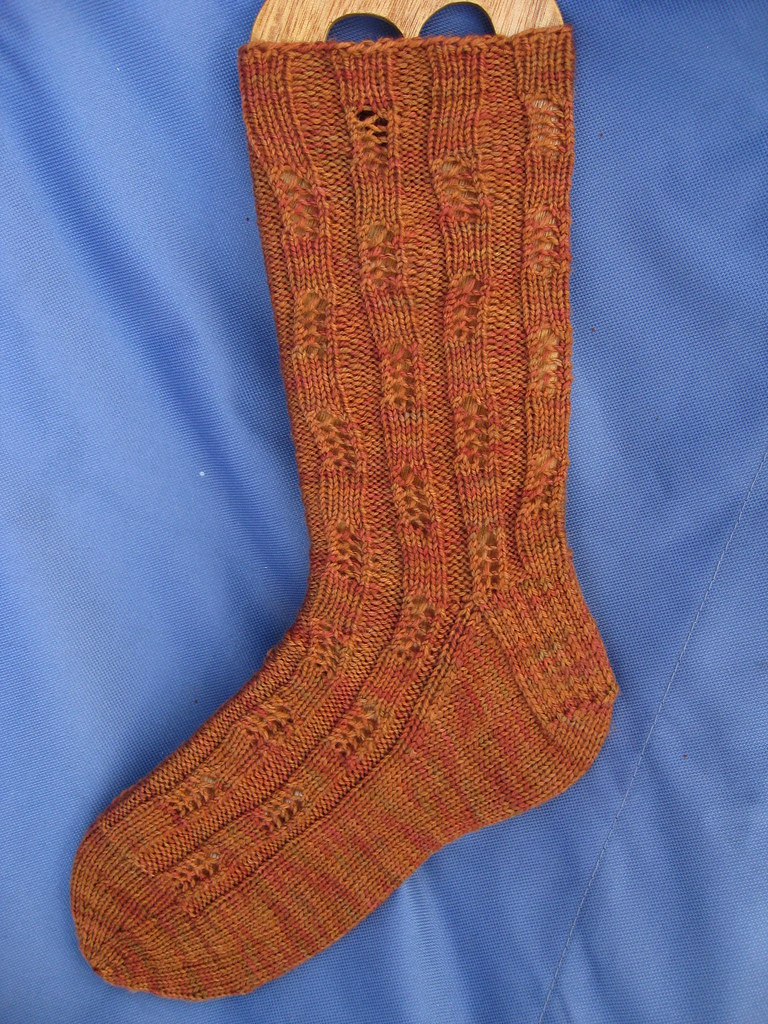 Remember this pattern? Probably not. I hardly remember it myself. According to my Ravelry project file, I started knitting the Sakiori Vest in October 2007. Yikes! The knitting was completed in Spring 2008, but that surfaced a fit issue, and Sakiori took an extended sabbatical. The little side pieces made the vest hang oddly. That plus the absence of shoulder shaping gave it a blocky, too-big appearance. I suspect this vest would look best on a much larger person.
Remember this pattern? Probably not. I hardly remember it myself. According to my Ravelry project file, I started knitting the Sakiori Vest in October 2007. Yikes! The knitting was completed in Spring 2008, but that surfaced a fit issue, and Sakiori took an extended sabbatical. The little side pieces made the vest hang oddly. That plus the absence of shoulder shaping gave it a blocky, too-big appearance. I suspect this vest would look best on a much larger person.
 The most important thing I learned here? Never, never, never knit an item of clothing that is not modeled by a human being. Much as I love Cheryl Oberle's "Folk Vests" (from which this pattern was taken), every single vest in the book is photographed lying flat. Not helpful. Another clue should have been the absence of any pictures of the vest on the actual body of one of the 20-30 Ravellers who have knit it. A few claimed to like it, but supplied no pix in support of this supposed devotion.
The most important thing I learned here? Never, never, never knit an item of clothing that is not modeled by a human being. Much as I love Cheryl Oberle's "Folk Vests" (from which this pattern was taken), every single vest in the book is photographed lying flat. Not helpful. Another clue should have been the absence of any pictures of the vest on the actual body of one of the 20-30 Ravellers who have knit it. A few claimed to like it, but supplied no pix in support of this supposed devotion.
 While Sakiori was hibernating I thought of sewing up the sides and putting a zipper in the front. But I couldn't decide how long the zipper should be. In the end I simply sewed up both sides and the front to about the same point and turned it into a pullover.
While Sakiori was hibernating I thought of sewing up the sides and putting a zipper in the front. But I couldn't decide how long the zipper should be. In the end I simply sewed up both sides and the front to about the same point and turned it into a pullover.
 I'm happy with this as something warm to wear around the house, but not so sure about public appearances. The shoulders have a "take me to your leader" look, not so very fashion forward. But I love all the colors and especially the memories of the socks I knit with these leftover bits. On the upper right front there is some yarn from the first pair of socks I ever made.
I'm happy with this as something warm to wear around the house, but not so sure about public appearances. The shoulders have a "take me to your leader" look, not so very fashion forward. But I love all the colors and especially the memories of the socks I knit with these leftover bits. On the upper right front there is some yarn from the first pair of socks I ever made.
 Interestingly, Cheryl Oberle's newest book "Knitted Jackets" has a pattern – the Wabi Sabi Jacket -- that looks just like the Sakiori with solid-color sleeves added. See what I mean? At first I was tempted to run with the idea and knit on some sleeves. But this project has taken up enough time and brain space. It's not perfect, but it will do. And, like all the best projects, it has been a valuable learning experience.
Interestingly, Cheryl Oberle's newest book "Knitted Jackets" has a pattern – the Wabi Sabi Jacket -- that looks just like the Sakiori with solid-color sleeves added. See what I mean? At first I was tempted to run with the idea and knit on some sleeves. But this project has taken up enough time and brain space. It's not perfect, but it will do. And, like all the best projects, it has been a valuable learning experience.



































 Sharon
Sharon















